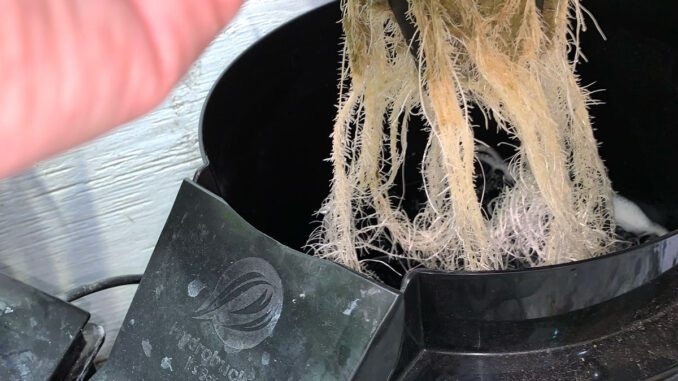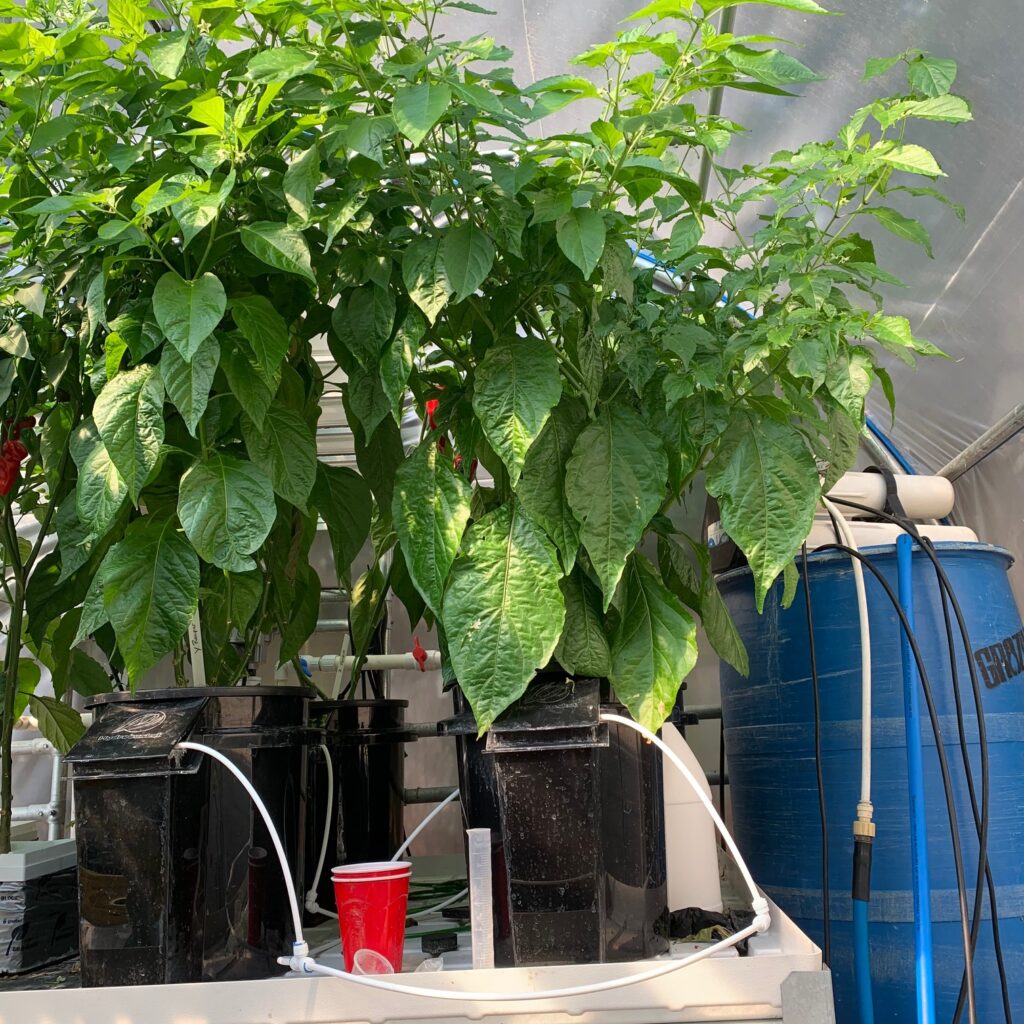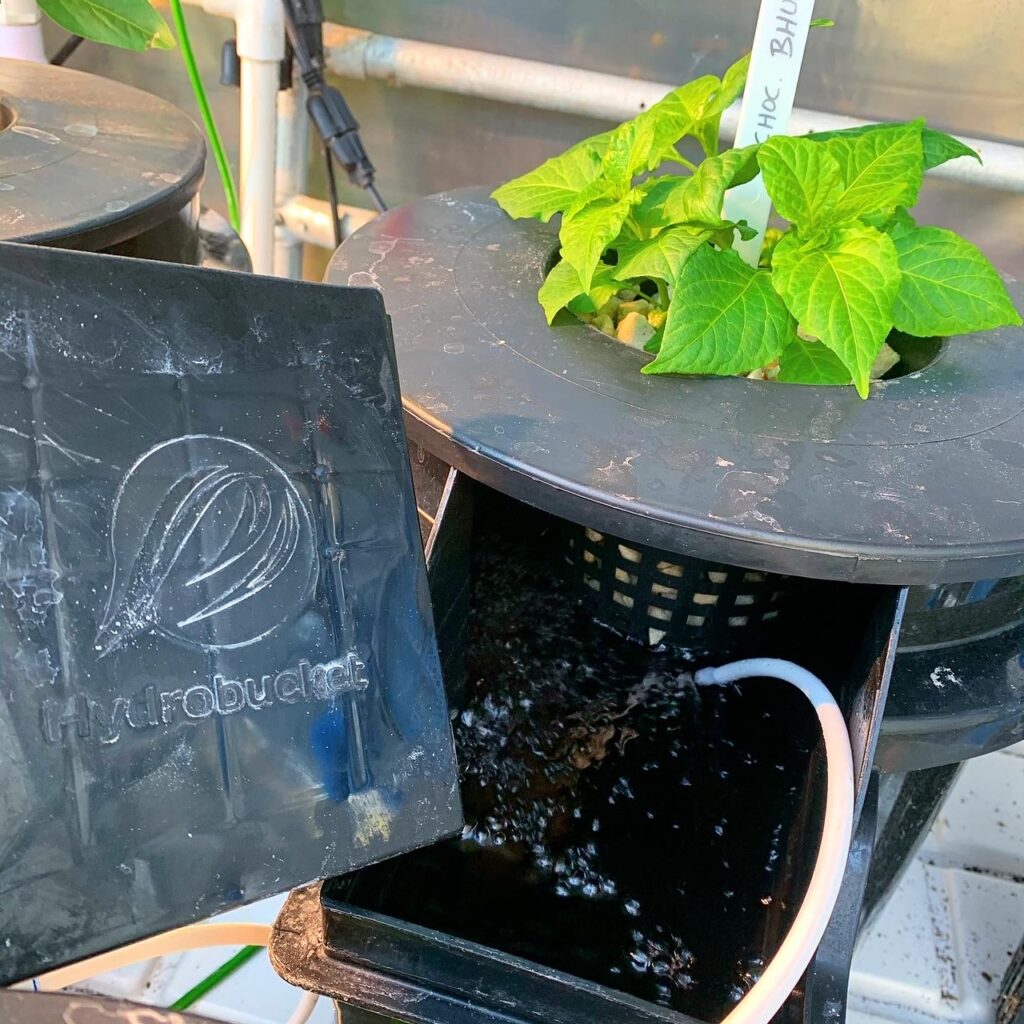
How To Grow Crop in Deep Water Culture
DWC Growing | Erik Biksa |
DWC (deep water culture) growing was one of the very first hydroponic growing methods used by plant researchers and arguably still remains one of the best. DWC grown plants and crops enjoy the benefit of uninterrupted access to water, oxygen and minerals at the roots. When managed correctly, there are no lulls in growth and plant development as can occur with soil based gardening.
It’s easy too; plants have a good reserve of water and nutrients so you aren’t chained to a watering can or hose.
While the principle is simple and remains relatively unchanged, the knowledge about DWC growing, applications and construction materials have improved greatly over the decades.

DWC Growing Basics, What is DWC?
In DWC growing, the principle is simple: bare roots are suspended over a volume of aerated hydroponic nutrient solution in an opaque container (one that contains sufficient solution volumes and keeps light out). The lid of the opaque container supports a cup or basket that holds the plant upright. Aeration is typically supplied by an aquarium type air pump and airstone continuously (placed in the bottom of the DWC growing bucket, module, tote, etc.)
How Does DWC Growing Work?
Plants don’t need soil in DWC growing because all of the necessary elements needed for growth are supplied by the grower in a soluble nutrient solution–this is accomplished by adding soluble nutrients (hydroponic fertilizer) to a clean source of water.
NOTE: hard water sources can cause problems because they already have minerals in them (that are not in the forms or ratios you want for plants).
Plants can grow much faster and bigger because when growers maintain an optimal pH range in the nutrient solution (easy to accomplish) and at the right concentration with the right type of plant food in the presence of dissolved oxygen (aeration) essentially the root atmosphere becomes supercharged.
In soil, plants have to expend energy to get at water and minerals. Additionally, under natural conditions, the availability, ratios and pH in the soil rarely remain at optimal for a given phase in the plant’s development. With DWC growing, the roots can remain at optimal conditions 24/7 and it’s easy to adapt these conditions to the plants’ needs, based on phase of growth or season.

Other DWC Growing Benefits
No more under or overwatering plants; roots are very happy submerged in nutrient solution when oxygen is supplied via a small wattage air pump.
It’s much easier to maintain a clean and hygienic growing environment; especially handy when gardening indoors or in a greenhouse
Less instances of pathogens and insects; the roots are well isolated in the growing module/bucket
Watering is more or less automatic–with a simple and inexpensive gravity operated float valve, solution levels are topped off automatically 24/7 as plants consume water and minerals.
Growth rates tend to be a lot of faster and yield potential can be considerably higher; additionally any adjustments made to crop nutrition can be seen in a day or two not weeks (versus soil)
How to Grow in DWC, Setting Up a DWC System
There are plenty of tutorials out there on how to make your own DIY DWC set up using plastic totes, etc. This can be an inexpensive way to try a fast crop of lettuce or herbs, but don’t expect these to hold up over time, support the weight of heavier crops or withstand bright light for long without becoming brittle and failing. On a patio or balcony having a tote fail is not likely to cause much in the way of property damage (crop loss aside). However, indoors this is something to take precautions to avoid; having 5 or 10 gallons slosh out isn’t a good thing.
Rigid plastics that are inert (will not easily react with chemicals or acidic solutions) and that keep light 100% out are a must. PVC is OK and ABS can be a step up. Stainless steel is also acceptable but harder to work with because you’ll likely need to cut some holes for net pots or fittings for tubing, etc.
You can even use wood, provided it is lined with a fish friendly pond liner, 6 mil polyethylene or well covered with fiberglass resin. Styrofoam coolers have also been used with success for short term and light weight crops.
All that said, using a simple bucket or pail with a lid is usually a good start–better yet, check out HydroBucket for a purpose made set-up that offers some innovations and features that are sure to save you some headaches, wet feet and floors while making it easier to add water, nutrients and make daily checks.
Best of all, there’s nothing more you’ll need to buy or replace and you can grow some very large and heavy weight plants without worries of anything failing. Just a handful of soilless media like rockwool, grow rocks or Oasis is needed for starting plants.
Other Tools & Materials Handy for Getting /Started with DWC Growing
-hole saw (for DIY systems)
-rubber grommets (available in various sizes)
-plastic float valve and tubing
-pH tester (liquid, litmus paper or digital)
-pH adjusters (pH down & pH up)
-soluble & complete fertilizer intended for hydroponics
-plastic 5 gallon pail for mixing nutrients
-measuring spoons & cup
-small amount of rockwool, oasis or grow rocks
-digital PPM/EC tester (optional; definitely nice to have)
-access to clean water that is low in dissolved solids; filtered water is best
In our next instalment of DWC growing, we’ll talk about some of the INs and OUTs of setting up the system, whether buying something ready made (more about that) or building your own. We’ll also talk about selecting or raising transplants for DWC, preparing the nutrient solution and transplanting. Check back soon and stay tuned!
Part Two, DWC Set Ups HERE
